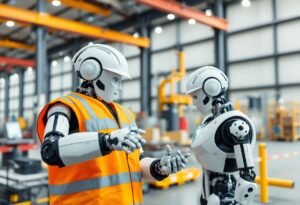As urban populations continue to grow, the advent of self-driving cars presents an opportunity to rethink our urban infrastructure. Innovation in autonomous vehicle technology offers potential benefits and challenges that need to be addressed to create effective city designs.
The Evolution of Urban Transport
The evolution of urban transport systems is integral to addressing the increasing congestion in cities. With the introduction of self-driving cars, there is a significant transformation in how we envision public and private transport. Autonomous vehicles are designed to communicate with each other and with road systems, thereby reducing traffic jams and accidents while improving efficiency. This innovation necessitates rethinking existing infrastructure, including roads, parking lots, and traffic signals. By investing in smart technologies, cities can enhance their transport networks and scale their infrastructure for a growing population. The paradigm shift brought about by autonomous vehicles will be essential for future urban planning.
The Role of Smart Infrastructure
Smart infrastructure will play a critical role in supporting the effective integration of self-driving cars into urban environments. This includes implementing advanced traffic management systems, smart road sensors, and adaptive traffic lights that respond to real-time data. These systems allow vehicles to communicate efficiently, ensuring smooth traffic flow and facilitating better decision-making for navigation. As a part of urban innovation, this technology helps reduce the need for extensive road expansions by maximizing current road capabilities. A shift towards smart infrastructure driven by robotics and automation can fundamentally change the landscape of urban mobility.
Environmental Impact and Sustainability
The environmental implications of autonomous vehicles are particularly noteworthy. Self-driving cars have the potential to significantly reduce carbon emissions by optimizing fuel consumption and promoting the use of electric vehicles. This shift aligns with global sustainability goals and can enhance the quality of urban living by reducing air pollution. Furthermore, the development of efficient public transport systems can be enhanced through the incorporation of autonomous technology. Cities that embrace this innovation could lead the way in creating a sustainable urban ecosystem, illustrating a commitment to responsible innovation that can produce long-term benefits.
Challenges of Integration
Despite the promising benefits of self-driving cars, there are significant challenges in integrating these vehicles into existing urban environments. Concerns about data security, regulatory frameworks, and public acceptance must be addressed to facilitate smooth adoption. The infrastructure will require updates, such as dedicated lanes for autonomous vehicles and appropriate signage to guide these intelligent systems. Engaging with communities to understand their concerns and preferences is vital for a successful transition. Urban planners and policymakers must collaborate to create guidelines that ensure safe and efficient integration of autonomous vehicles within the transportation network.
The Economic Landscape of Autonomous Vehicles
The economic impact of self-driving cars extends beyond the automotive industry. As cities recalibrate infrastructure to accommodate these vehicles, new opportunities for economic growth and innovation emerge. Sectors such as logistics, ride-sharing, and urban planning stand to benefit from the efficiencies introduced by autonomous technology. Moreover, the shift could lead to job creation in sectors focused on technology development and infrastructure maintenance. By prioritizing innovative solutions, cities can position themselves as leaders in the emerging autonomous vehicle economy, capitalizing on new revenue streams while enhancing urban living.
Future Urban Mobility Trends
The future of urban mobility will undoubtedly be shaped by self-driving cars alongside other innovations such as electric bikes, public transit automation, and more connected urban environments. The convergence of these technologies will result in multifaceted transportation systems that adapt to the needs of diverse populations. In this new age, urban infrastructure must accommodate not only self-driving cars but also scaling technologies that prioritize human experience and safety. Exploring trends associated with smart cities, coupled with autonomous vehicle technology, will provide insights into the future of urban life.
This article is for informational purposes only and does not constitute professional advice. Always consult with qualified professionals for specific concerns.





















